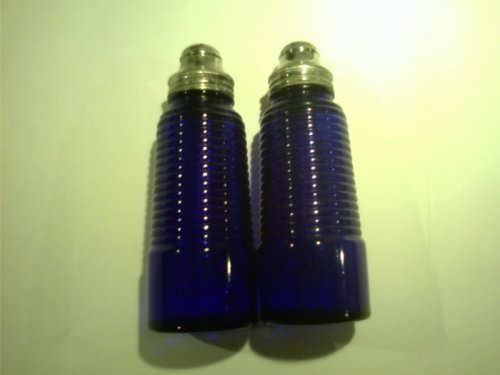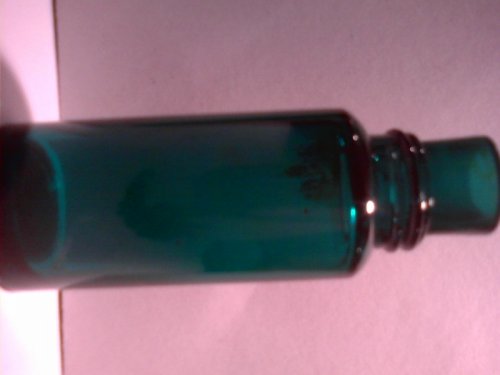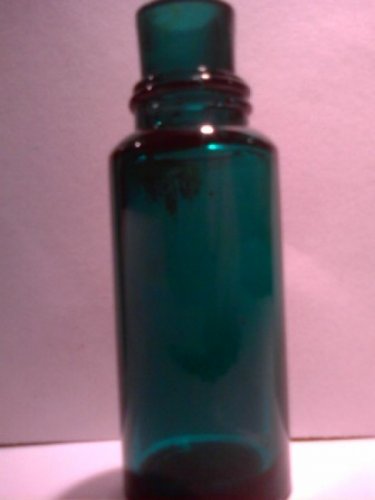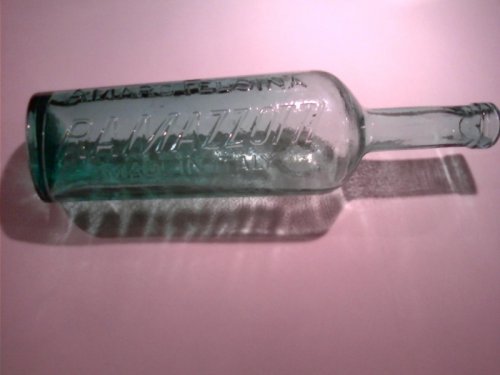You are using an out of date browser. It may not display this or other websites correctly.
You should upgrade or use an alternative browser.
You should upgrade or use an alternative browser.
another new dump
- Thread starter hunter2000
- Start date
hunter2000
Well-Known Member
Preston of New Hampshire
hunter2000
Well-Known Member
hunter2000
Well-Known Member
hunter2000
Well-Known Member
JOETHECROW
Well-Known Member
- Joined
- Sep 3, 2005
- Messages
- 11,082
- Reaction score
- 2
- Points
- 38
Nice color on the Prestons.....Also the italian Ramazzotti is different and cool. Looks like a promising spot.
surfaceone
Well-Known Member
- Joined
- Dec 9, 2008
- Messages
- 11,161
- Reaction score
- 23
- Points
- 0
Hello Dennis,
Some real mixed age goodies at your dump. I do like those cobalt deco salt & peppers.
The Amora Felsina Ramazzotti is a popular Italien bitters.
"I.
Amaro. The word means “bitter†in Italian. But it is also the name of a classic Italian herbal liqueur. Frequently consumed after dinner to aid digestion, amaro is a mixture herbs, roots and alcohol with a bitter character that is also imbibed as a tonic and as a feature ingredient in a long drink.
The history of the amaro goes back to Roman times. Archaeologists have found traces of herb-infused wines, which were primarily prepared for their medical virtues. The Roman aristocracy—seekers of luxurious and exotic pleasures—were fond of blending rare and precious herbs into wine, which they believed had supernatural powers.
During the Middle Ages, monks and alchemists replaced the wine with alcohol in these herbal recipes, which were administered as medicinal remedies. In the course of the centuries, these formulas become very popular with the nobility, who called them liquores. The traditional liquore recipes changed little until a 24-year-old chemist from Milan named Ausano Ramazzotti developed a fortifying liqueur, which became one of the world’s famous amaros or bitters.
II.
It is 1815. Ausano Ramazzotti owns an herbalist shop located near the Arena in Milan. He also sells wines and spirits. It is a tiny shop with an equally tiny laboratory.
But it is in that shop that Ramazzotti made the most of his extensive knowledge of curative plants and alcohols. He tests various recipes, trying to create an amaro with an attentuated bitterness that could potentially please a broader audience.
Orange peel, Chinese star anise, Angelica root, Quinine, Rose petals, Vanilla…in the end, he perfected a harmonious mixture of 33 ingredients. Ausano named his amaro, the Amaro Festina Ramazzotti.
III.
Success came quickly. Ramazzotti’s customers so appreciated this particular taste as well as its tonic and digestive properties that he earned a great reputation throughout the city.
It was during this time that the first cafés opened in Milan. They were the gathering places where most people met with friends over a good cup of coffee to discuss music or literature, best avoiding politics of the local or the national kind.
It is 1848. Ausano Ramazzotti has a delightful inspiration. He opens an establishment, near La Scala theatre, where his customers could savour amaro Ramazzotti instead of coffee. For him, it is the ideal way to promote his amaro and win over new customers every day. His inspiration paid off. Amaro Ramazzotti becomes the favourite amaro throughout Italy.
IV.
It is 1866. Ausano Ramazzotti dies. He is 75 years old. Within 50 years, his Amaro Ramazzotti transformed his little herbal shop into modern, commercial production company which employed about a hundred workers.
His heirs left the original small store and transferred production to a larger plant on Via Canonica, increasing case output to meet a growing demand. The familiar blue and red tab bottles remain quasi unchanged to this day.
In 1900, the Ramazzotti children further improved production, applying state-of-the-art techniques. And with the exception of the First World War, these are happy years filled with progress and expansion. These are also the years which see the birth of modern-day advertising.
V.
The history of Ramazzotti is profoundly linked to the history of Italian advertising. Renowned illustrators, the first big names in Italian advertising art—Cappiello, Seneca, Dudovich, Boccasile—created the famous Ramazzotti posters, which today are found in numerous museums and private collections.
But it is especially the famous slogan from 1934 that is synonymous with the brand’s success. “Ramazzotti fa sempre bene " [Ramazzotti is always good for you] was emblazoned on the company’s poster campaigns and entered the Italian collective consciousness even to this day.
Almost 200 years after Ausano Ramazzotti first conducted his experiments, Amaro Ramazzotti is a drink produced in millions of litres per year that is appreciated throughout the world." From.


Some real mixed age goodies at your dump. I do like those cobalt deco salt & peppers.
The Amora Felsina Ramazzotti is a popular Italien bitters.
"I.
Amaro. The word means “bitter†in Italian. But it is also the name of a classic Italian herbal liqueur. Frequently consumed after dinner to aid digestion, amaro is a mixture herbs, roots and alcohol with a bitter character that is also imbibed as a tonic and as a feature ingredient in a long drink.
The history of the amaro goes back to Roman times. Archaeologists have found traces of herb-infused wines, which were primarily prepared for their medical virtues. The Roman aristocracy—seekers of luxurious and exotic pleasures—were fond of blending rare and precious herbs into wine, which they believed had supernatural powers.
During the Middle Ages, monks and alchemists replaced the wine with alcohol in these herbal recipes, which were administered as medicinal remedies. In the course of the centuries, these formulas become very popular with the nobility, who called them liquores. The traditional liquore recipes changed little until a 24-year-old chemist from Milan named Ausano Ramazzotti developed a fortifying liqueur, which became one of the world’s famous amaros or bitters.
II.
It is 1815. Ausano Ramazzotti owns an herbalist shop located near the Arena in Milan. He also sells wines and spirits. It is a tiny shop with an equally tiny laboratory.
But it is in that shop that Ramazzotti made the most of his extensive knowledge of curative plants and alcohols. He tests various recipes, trying to create an amaro with an attentuated bitterness that could potentially please a broader audience.
Orange peel, Chinese star anise, Angelica root, Quinine, Rose petals, Vanilla…in the end, he perfected a harmonious mixture of 33 ingredients. Ausano named his amaro, the Amaro Festina Ramazzotti.
III.
Success came quickly. Ramazzotti’s customers so appreciated this particular taste as well as its tonic and digestive properties that he earned a great reputation throughout the city.
It was during this time that the first cafés opened in Milan. They were the gathering places where most people met with friends over a good cup of coffee to discuss music or literature, best avoiding politics of the local or the national kind.
It is 1848. Ausano Ramazzotti has a delightful inspiration. He opens an establishment, near La Scala theatre, where his customers could savour amaro Ramazzotti instead of coffee. For him, it is the ideal way to promote his amaro and win over new customers every day. His inspiration paid off. Amaro Ramazzotti becomes the favourite amaro throughout Italy.
IV.
It is 1866. Ausano Ramazzotti dies. He is 75 years old. Within 50 years, his Amaro Ramazzotti transformed his little herbal shop into modern, commercial production company which employed about a hundred workers.
His heirs left the original small store and transferred production to a larger plant on Via Canonica, increasing case output to meet a growing demand. The familiar blue and red tab bottles remain quasi unchanged to this day.
In 1900, the Ramazzotti children further improved production, applying state-of-the-art techniques. And with the exception of the First World War, these are happy years filled with progress and expansion. These are also the years which see the birth of modern-day advertising.
V.
The history of Ramazzotti is profoundly linked to the history of Italian advertising. Renowned illustrators, the first big names in Italian advertising art—Cappiello, Seneca, Dudovich, Boccasile—created the famous Ramazzotti posters, which today are found in numerous museums and private collections.
But it is especially the famous slogan from 1934 that is synonymous with the brand’s success. “Ramazzotti fa sempre bene " [Ramazzotti is always good for you] was emblazoned on the company’s poster campaigns and entered the Italian collective consciousness even to this day.
Almost 200 years after Ausano Ramazzotti first conducted his experiments, Amaro Ramazzotti is a drink produced in millions of litres per year that is appreciated throughout the world." From.


hunter2000
Well-Known Member
Surfaceone,
I am greaty impressed with your knoledge I would never had resecrched it that much. I will say it is now one of my faverot finds. Its perfect in every way color, imbossing, condition and now i find out the history thats awsome.
I continue to show my items found because of people like you I can only hope to some day be able to share some of my knoledge.
Thanks
And its a bitter Nice
Dennis
I am greaty impressed with your knoledge I would never had resecrched it that much. I will say it is now one of my faverot finds. Its perfect in every way color, imbossing, condition and now i find out the history thats awsome.
I continue to show my items found because of people like you I can only hope to some day be able to share some of my knoledge.
Thanks
And its a bitter Nice
Dennis
Similar threads
- Replies
- 7
- Views
- 1K
- Replies
- 1
- Views
- 1K
- Replies
- 5
- Views
- 2K
Latest posts
-
Once in a lifetime? Moral of the story never overlook fallen tree stumps
- Latest: Bluestreak39
-
-
Rare Utah can added to my collection!
- Latest: timeandabottle
-
-
Latest threads
-
Once in a lifetime? Moral of the story never overlook fallen tree stumps
- Started by Bluestreak39
- Replies: 0
-
-
-
Looking for info; embossed BUBBLES; no other markings.
- Started by MSZ
- Replies: 6
-
-
C.1870 Utah drugstore with a snake on pestle
- Started by timeandabottle
- Replies: 0







